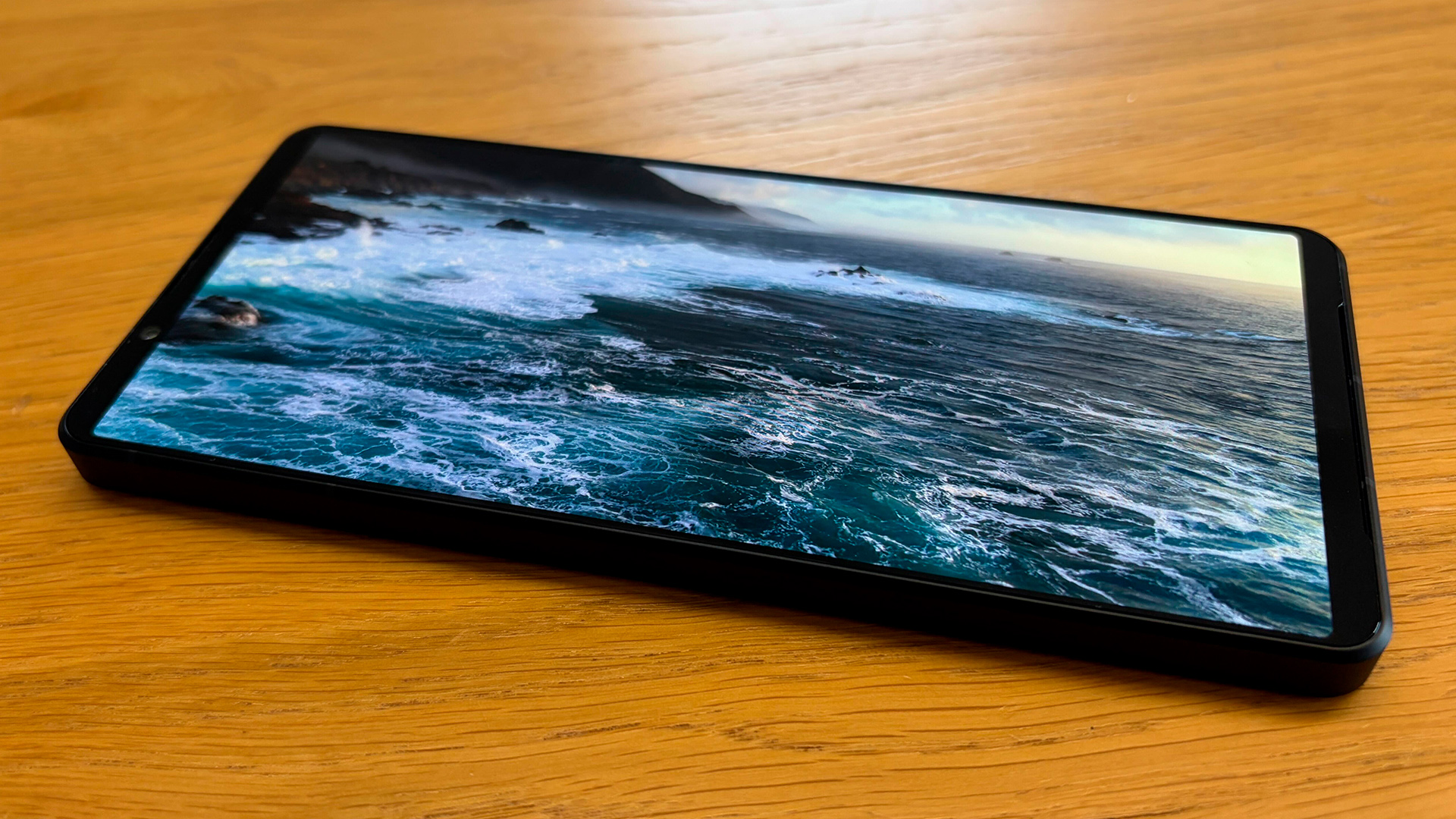What Hi-Fi? Verdict
Sony delivers yet another smartphone that will appeal to creators and on-the-go AV enthusiasts alike – it sounds sensational, making it a great choice for audiophiles, and though it can be bested for picture performance, we still appreciate its balanced image quality
Pros
- +
Balanced and natural-looking image
- +
Rich, weighty and detailed headphone audio
Cons
- -
Limited HDR format support
- -
Beaten for picture sharpness and detail
- -
Some operating system frustrations
Why you can trust What Hi-Fi?
Sony’s smartphone division has soldiered on for yet another year, and considering we’ve been huge advocates for its Xperia 1 series for many years running, we’re pleased to see it endure amongst its much more popular peers from the likes of Samsung, Apple and Google.
Popularity isn’t everything, and there’s something to be said for Sony’s niche focus on delivering a top-notch portable AV experience. As you can imagine, that’s a stance that resonates with us massively.
Picture and sound performance remain at the forefront of Sony’s mission, and while the company’s resolve has softened somewhat in the pursuit of public approval, the Xperia 1 VII – which we have in for review today – seems to continue that spirit.
With that in mind, does Sony achieve its brief in delivering another smartphone that doubles up as a pocket-sized home cinema and a hi-fi quality portable music player?
Price
The Xperia 1 VII is officially available for £1399 here in the UK. Sony fans in the US and Australia will know that it doesn’t offer its smartphone range in either region, and the 1 VII is no exception.
Sony’s main competitor at this level is the Award-winning Samsung Galaxy S25 Ultra, which is tough competition indeed. It’s unquestionably the more mainstream option, and while it launched at £1249 / $1300 / AU$2199, it can frequently be found for less now that it’s been on the market for almost a year.
There is also the iPhone 17 Pro Max (£1199 / $1199 / AU$2199) to be aware of. We haven’t tested it yet, but the standard iPhone 17 has just scooped up an Award, and its predecessor, the iPhone 16 Pro, scored top marks in our full review, so we’re willing to bet it offers a competitive AV experience.
The latest hi-fi, home cinema and tech news, reviews, buying advice and deals, direct to your inbox.
Build
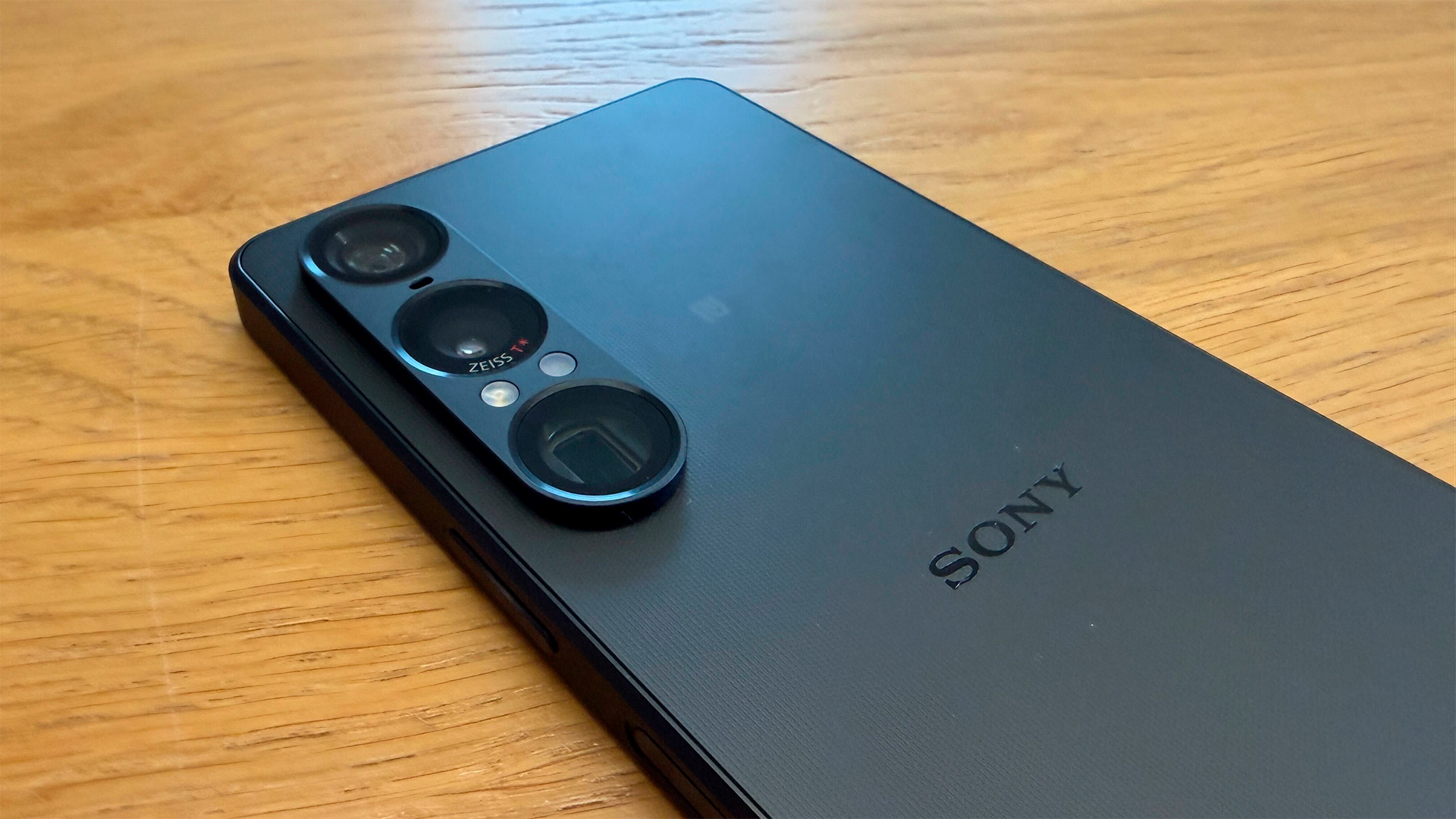
Sony’s latest flagship mobile doesn’t look miles apart from its predecessor, but that doesn’t really concern us, as it still looks rather smart.
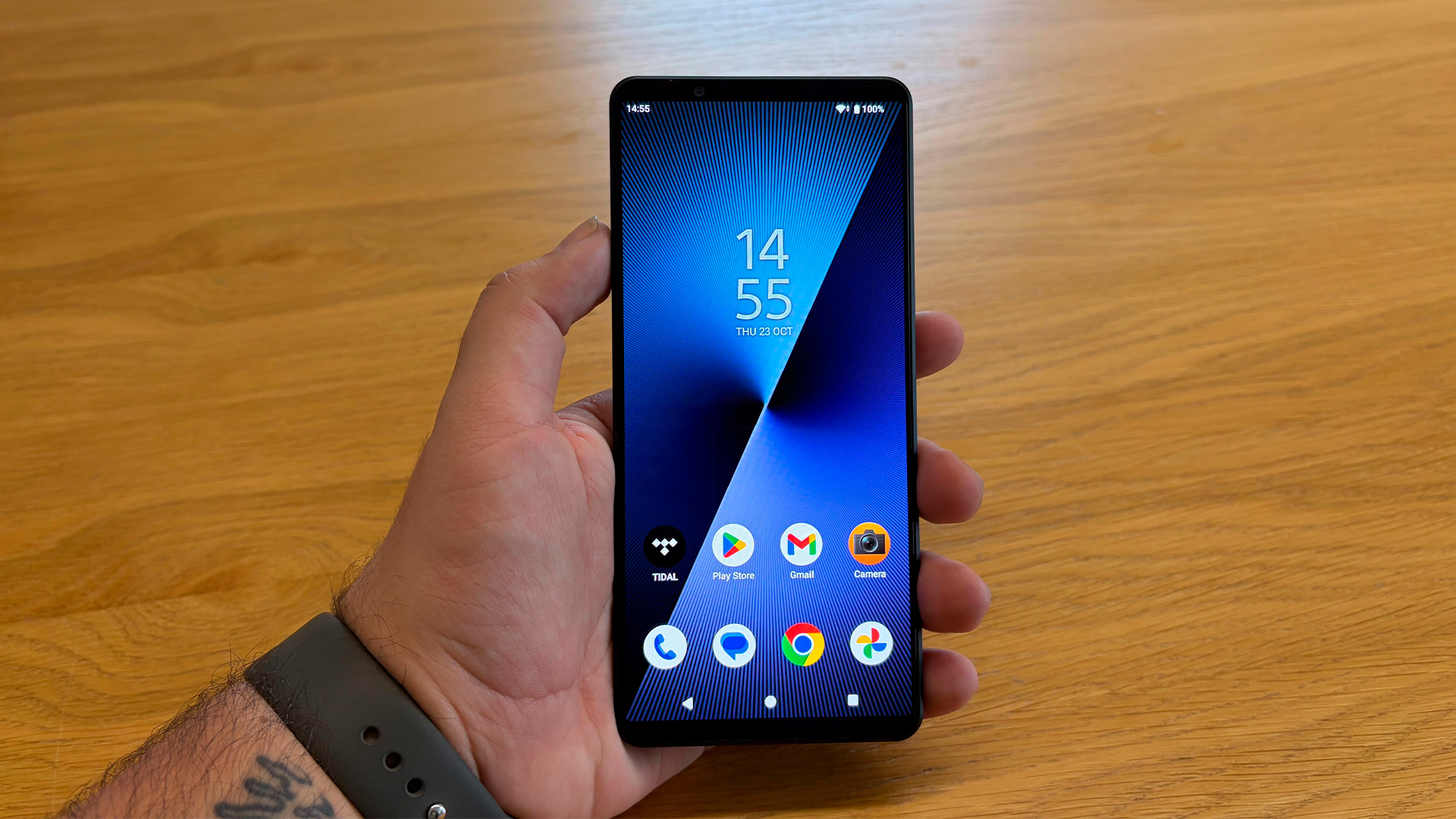
Screen size 6.5-inch
Screen type LTPO OLED
Screen resolution 1080 x 2340 pixels (396 ppi)
Finishes x 3 (Slate Black, Moss Green, Orchid Purple)
Operating system Android 15 (updated to Android 16)
Storage 256GB (512GB in select markets)
RAM 12GB
It features the same textured glass back and etched aluminium frame as its predecessor, albeit a bit more refined with smoother bevelled edges, and the rear glass sits flush with the frame.
This results in a much smoother and more comfortable phone to hold. In comparison, the Xperia 1 VI feels a bit sharp in the hand.
The ridged sides of the handset feature numerous interruptions in the form of a volume rocker, a combination power/lock button with an integrated fingerprint sensor, a dedicated camera shortcut and shutter button, a combination SIM and Micro SD card tray (which can be removed without the need for a SIM ejector pin tool), and – you guessed it – a 3.5mm headphone jack.
On the front of the 1 VII, you’ll find a 6.5-inch OLED display with a 19.5:9 aspect ratio. We still miss the 21:9 aspect ratio of the Xperias of old, but we can’t deny that the more mainstream aspect ratio (which can also be found on the Galaxy S25 Ultra) has its practical benefits when it comes to usability and app compatibility.
The display features fairly slender bezels on the sides, and slightly chunkier ones at the top and bottom, though there is a valid audio-related reason for that, which we’ll come to later.
We think the handset looks very sleek in the Slate Black finish we have, though it's also available in Moss Green and Orchid Purple for anyone who wants to add a (fairly subdued) pop of colour.
Features
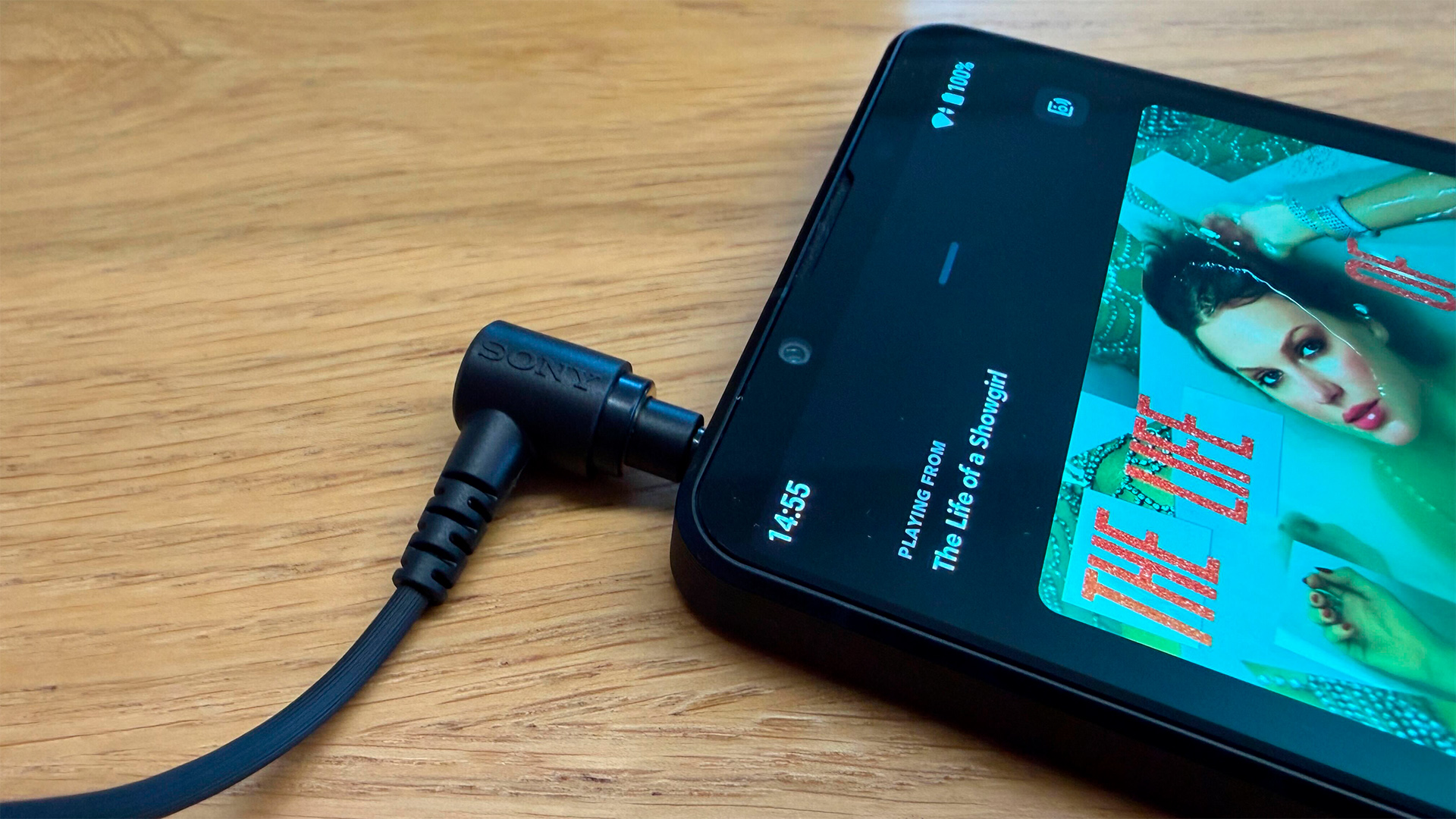
If we’re being brutally honest, Sony’s smartphones have always excelled at things we’re most interested in when it comes to features, but they lag behind the cutting-edge mainstream handsets on the market when it comes to a lot of creature comforts.
We’ll start with the glorious 6.5-inch OLED display, which has reportedly been tuned by Sony’s Bravia television department. Sony is supposedly harnessing the power of AI picture processing to boost some of the key picture components, such as colour, contrast, texture and three dimensionality.
The one disappointment, however, is that the display’s resolution is 1080 x 2340 – otherwise known as Full HD+.
In a display this size, we find that this resolution is technically enough, as the pixel density is suitably high at 396ppi. However, considering the price (and the competition), we think that Sony should really be offering a Quad HD display – especially considering it wasn’t that long ago that it was shipping smartphones with full-blown 4K displays.
Nevertheless, this screen features a dynamic refresh rate up to 120Hz, and it’s 20 per cent brighter than its predecessor. In fact, Sony says that this is the brightest display in any Xperia smartphone to date, though it hasn’t shared any specific figures regarding nits.
This has been paired with a new sensor on the rear of the handset, which detects the ambient lighting conditions and adapts the phone’s display to suit.
There is also a considerable amount of customisation that you can apply to the phone’s display. There is the option to leave the phone in its ‘recommended’ setting, which will optimise the display for “smartphone use and displayed content”.
This sounds a tad vague to us, but it seems as though Sony is implying that the phone will use the best picture settings for what it’s displaying.
In its custom settings, we can switch between the Bravia-tuned standard mode, which emphasises “high-quality textures” and “vibrant colours” – or Sony’s creator mode, which is akin to the Filmmaker Mode on a TV.
This goes for a more accurate picture presentation, which will appeal more to purists who wish to see content in the way that the creator intended.
Interestingly, there is an option to only apply creator mode in specific apps, meaning you can enjoy the crisper standard mode for day-to-day use, and automatically switch to the creator mode for a more cinematically authentic movie experience.
To us, that seems to fulfil the same role as the previous recommended preset, albeit with a bit more granularity in which apps default to your preferred screen mode.
Sony has also included two video enhancement features in the form of real-time HDR, which adapts HDR video to your viewing environment, and video image enhancement, which appears to be an upscaling mode that adds additional sharpness.
While we’d usually steer clear, Sony’s implementation of the latter is fairly effective at adding a bit more pop and sharpness to the picture.
Disappointingly, while the display supports HDR, it doesn’t support either of the Dolby Vision or HDR10+ formats we see on the iPhone 17 or Samsung Galaxy S25 Ultra, respectively.
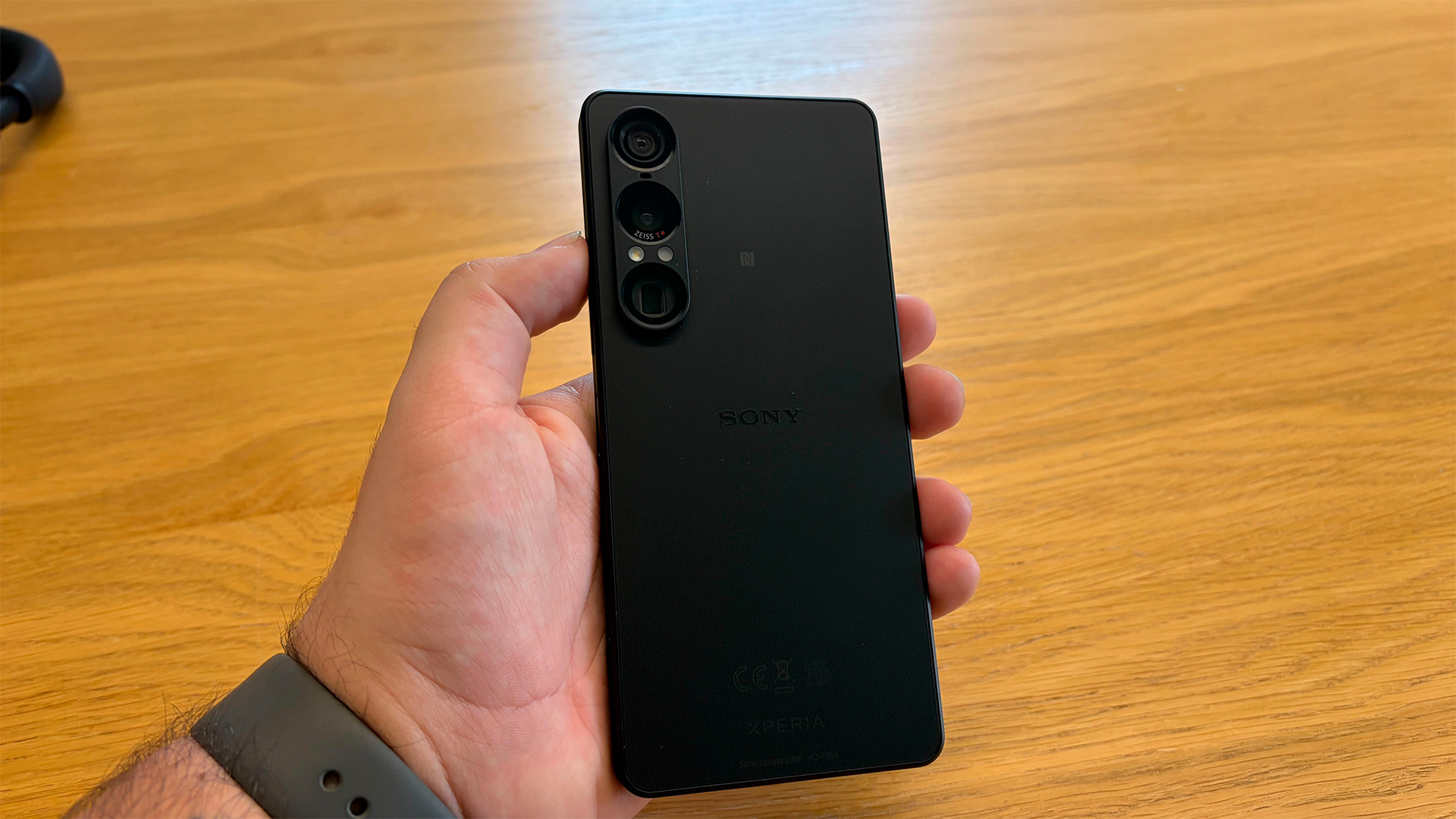
On the audio side, Sony has called in more backup from one of its subsidiaries, as its Walkman brand – which is responsible for countless portable music players – has reportedly played a key role in upgrading the 3.5mm headphone jack.
It has been constructed with high-quality solder containing gold to "enhance the reproduction of subtle sounds" and "improve the soundstage and directional accuracy".
This has been paired with a new high-performance audio integrated circuit to greatly enhance the wired listening experience. We must, of course, give Sony kudos for continuing to offer a headphone jack on its smartphones while others have moved on.
Those who have invested in a pair of the best wireless headphones, meanwhile, will be pleased to hear that the Xperia 1 VII features Bluetooth 6.0, with support for the AAC, SBC, and LE codecs. AuraCast is featured too.
Hi-res wireless audio is also supported via LDAC, and as this phone is powered by Qualcomm’s Snapdragon 8 Elite processor (backed up by 12GB of RAM and 256GB of storage), it also features the aptX Adaptive codec.
Dolby Atmos and Sony’s 360 Reality Audio are also on board for supported streaming services. And for those who like to play media out loud, the Xperia 1 VII sports a set of stereo front-firing full-stage speakers, which Sony says sound “even more realistic” this year.
With that exhaustive list of AV features out of the way, we can now review the remaining specifications of the smartphone.
It runs Android 16, which is the latest version of Google’s operating system, albeit with a fairly barebones Sony skin running over the top. Sony’s take on Android can feel frustratingly limited at times, as there are missing native features, such as a dedicated photos app (it uses Google Photos instead) or a weather widget.
That being said, it does feature support for the latest Google AI features, including the Gemini Assistant, generative photo editing, and circle to search. We also can’t fault the performance, as the handset flies throughout the operating system for day-to-day tasks.
Another of Sony’s divisions, Alpha, has been consulted for the camera.
It consists of a 52MP main lens (which uses Sony’s Exmor T sensor), a telephoto lens with a true optical zoom from 85 to 170mm, and a new 16mm focal length ultra wide camera, which utilises a 50MP sensor and pixel binning to capture detailed 12MP images. The sensor is 2.1 times larger than the previous model, which means it will perform better in low-light conditions, according to Sony.
Paired with Sony’s comprehensive camera app and dedicated shutter button (which can be half-pressed to establish focus), the Xperia 1 VII provides an excellent, if slightly overwhelming, photography experience. That being said, we find it relatively easy to grab some eye-catching snaps when we use the basic shooting mode.
Rounding things out with the 5000mAh battery, the Xperia makes light work of heavy usage over a day, and it can even soldier on through a couple of days, provided you’re not pushing the phone to its limits for extended periods.
Picture
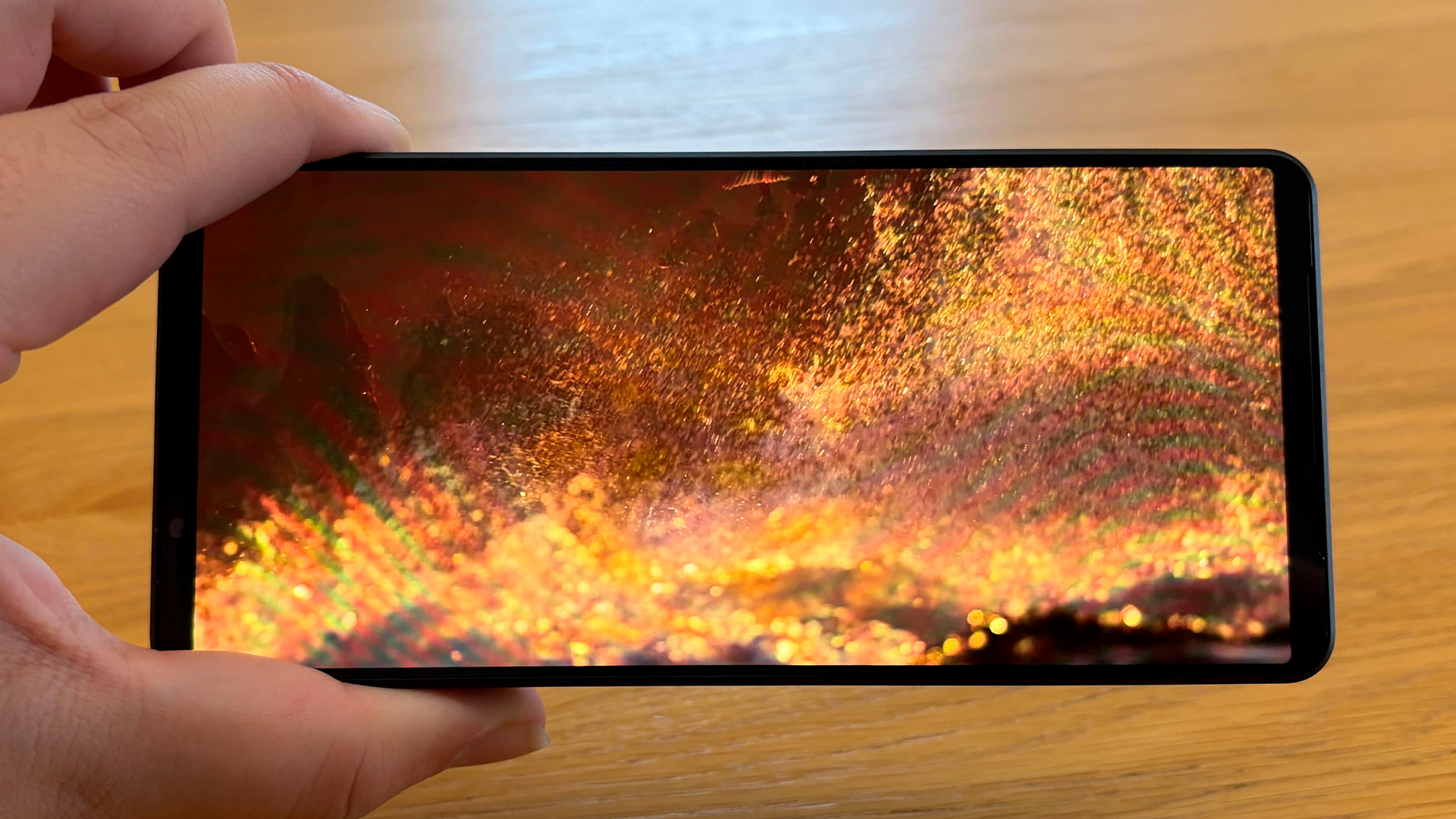
Sony’s smartphones have enjoyed a remarkably consistent streak when it comes to picture quality in our reviews. In previous years, they’ve sported 4K displays with cinematically-appropriate aspect ratios, but that all changed last year.
We deemed the Xperia 1 VI to be a solid choice for on-the-move cinephiles, albeit not to quite the same extent as its predecessors. That statement rings true for this year’s model, too, but there is now the added pressure of some extremely talented competition.
We test the Xperia 1 VII in both of its picture modes, and we end up leaning towards the Bravia-tuned standard setting, as it adds a touch of punch while remaining very balanced. The creator mode will be the preferred choice for purists, but it feels a touch washed out in comparison.
We start with Mission: Impossible – Dead Reckoning (Part One) on Netflix, and the results are immediately impressive. As we mentioned, colours feature a solid balance of punch and richness without looking overbearing or unnaturally vibrant. In comparison, the Samsung Galaxy S25 appears to lack some finesse here, with slightly too much red in skin tones.
Sony’s usual proficiency for delivering a solid, contrast-rich picture is clearly evident with the 1 VII. There’s an impressively convincing three-dimensional effect to the display.
Switching to Blade Runner 2049 (also on Netflix), we find that the tower featured in the opening overhead shot stands out against the background nicely with a good sense of depth, and there is a general sense of solidity and three-dimensionality to the image that helps to enhance immersion, which is easier said than done on a smartphone display.
Moving over to Civil War on Amazon Prime Video, the Sony remains staunchly natural, and motion is solid as fighter jets and helicopters soar overhead during the build-up to the climactic final battle.
As the sequence progresses towards a besieged Washington, DC at night, we find that the Sony retains an impressive level of detail in shadowy scenes, too.
While we affirm that the Sony’s picture is generally impressive, though, it is outshone by the Samsung Galaxy 25 Ultra in a few ways.
We appreciate the Samsung’s higher resolution screen when we place the two handsets side-by-side, as everything looks noticeably crisper and more detailed.
Sticking with Civil War, we find that the outline of a helicopter swooping over a lake, and the dense foliage featured throughout the sequence, both appear cleaner and sharper on the Samsung, and the enhanced brightness adds intensity to the flames as the photojournalists drive through a forest fire at night.
The Samsung even delivers most of what the Sony can muster when it comes to the solidity and three-dimensional depth of the image, which, combined with the rest of the improvements to detail and brightness, makes it the better handset of the two when it comes to picture performance.
Sound
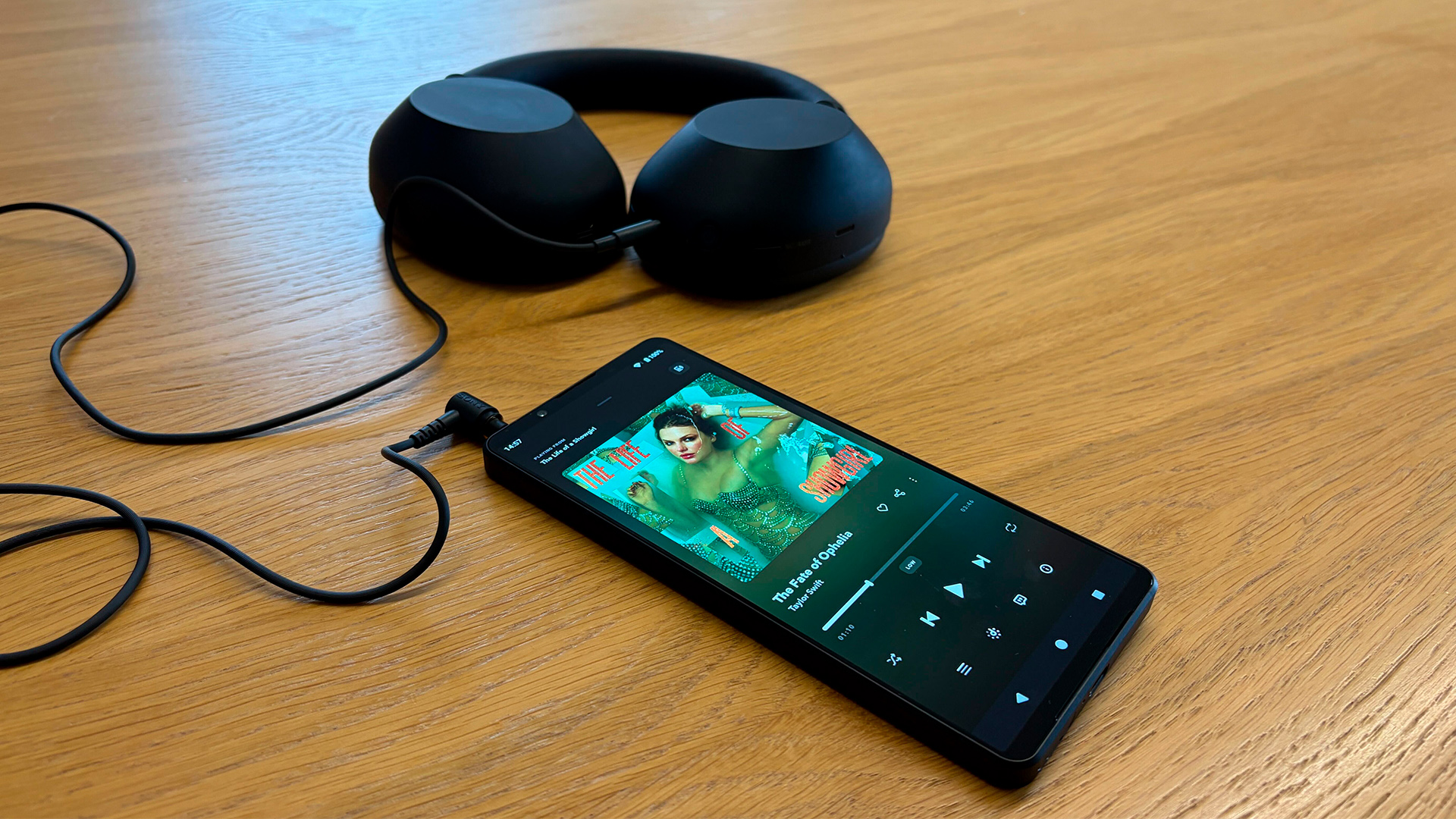
While the Xperia 1 VII can be beaten when it comes to its picture, we find that sound is a whole different story. Put simply, the Sony delivers a headphone experience that will delight anyone who wants a smartphone that doubles as a talented portable music player.
Plugging a pair of wired cans directly into the phone via the 3.5mm headphone jack and loading up Tidal, we’re rewarded with a detailed, dynamic and engaging performance that highlights the Samsung’s relative shortcomings in the process.
The opening piano chords to Taylor Swift’s The One are presented with a solid, weighty presence, and they’re soon joined by a rich and rhythmic acoustic guitar. The Sony allows each instrument to shine by revealing plenty of detail and giving each aspect of the track plenty of space, all the while ensuring it remains cohesive and well organised.
And while the phone provides a clean and revealing sound, it manages to balance everything with a sense of warmth and dynamism, which means it doesn’t come across as too analytical. Swift’s vocals are conveyed with a richness and clarity that picks up oodles of emotion, and timing is kept pin-sharp throughout.
Switching to Kiss The Ring from Hans Zimmer’s Dune: Part Two soundtrack, we find that the Sony is capable of delivering huge scale and weighty bass, all while retaining balance and composure.
We’re similarly impressed with the full-stage front-firing speakers, and while we generally don't recommend playing music out loud from your phone, they’re more than good enough in a pinch for watching a TV show or even some light movie viewing.
Returning to Mission: Impossible, we find that the speakers deliver a solid sense of spatial separation, decent vocal clarity and detail, and a good sense of rhythmic drive to the soundtrack.
And while we won’t claim that this speaker can rival any sort of Dolby Atmos soundbar or speaker package when it comes to immersion, it does a good job of placing effects to create a somewhat spatial feeling to the sound.
Verdict
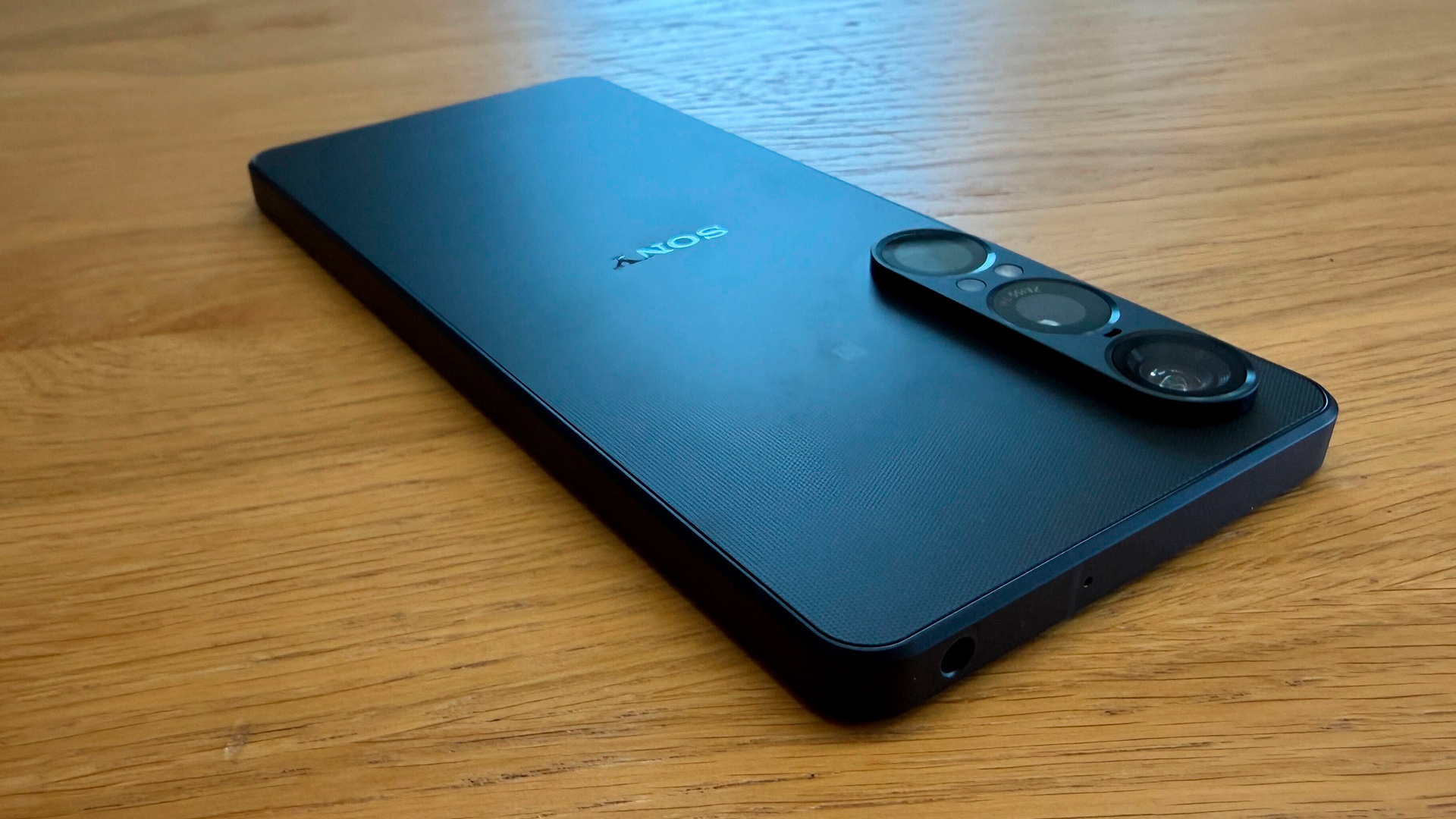
Sony’s latest flagship smartphone remains a solid enthusiast option for those who value taking their music and movies on the go over all else.
Cinephiles will enjoy the balanced display – even if it can be beaten by its Samsung competitor – and audiophiles will find immense satisfaction in the inclusion of an upgraded headphone jack and superb audio quality.
It won’t suit everyone's taste, and there are some software quirks to contend with, but the Xperia 1 VII remains a good choice for those looking for a smartphone that puts AV on the same pedestal as AI.
SCORES
- Picture 4
- Sound 5
- Features 4
MORE:
Read our review of the Samsung Galaxy S25 Ultra
Also consider the Apple iPhone 17
Read our Samsung Galaxy Z Flip 7
Best smartphones: the best phones for music and movies
Lewis Empson is a Senior Staff Writer on What Hi-Fi?. He was previously Gaming and Digital editor for Cardiff University's 'Quench Magazine', Lewis graduated in 2021 and has since worked on a selection of lifestyle magazines and regional newspapers. Outside of work, he enjoys gaming, gigs and regular cinema trips.
- Alastair StevensonEditor in Chief
You must confirm your public display name before commenting
Please logout and then login again, you will then be prompted to enter your display name.
